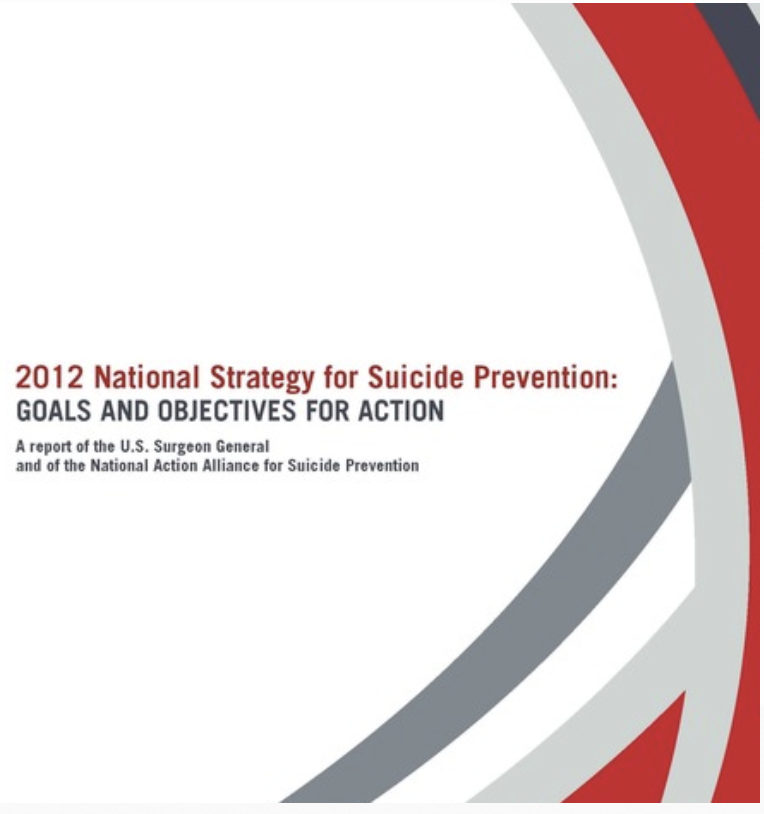A Culture of Caring: A Suicide Prevention Guide for Schools (K-12)
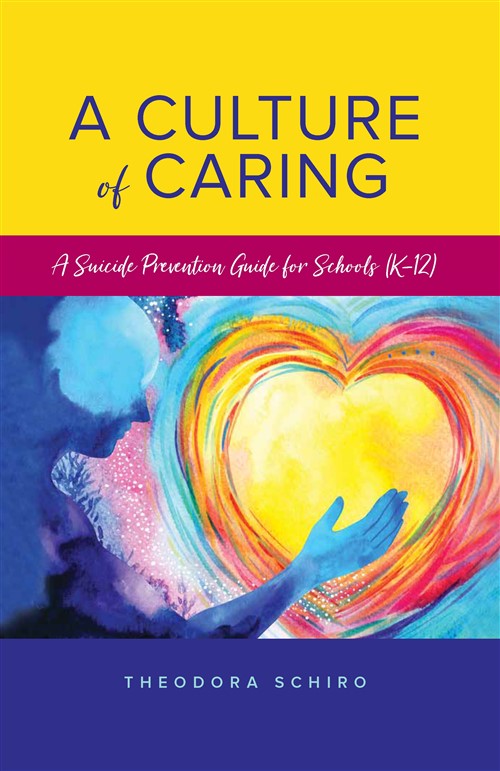
Suicide is the 2nd leading cause of death for people ages 10-24. And the numbers are rising. In spite of increasing prevention efforts.
As awareness grows about the increase in youth suicide rates, school leaders need information on suicide prevention. Tragically, the search often begins only after a school community has suffered the loss of a student.
A Culture of Caring: A Suicide Prevention Guide for Schools (K-12) is about saving lives. Designed as a handbook for busy educators, readers will find information about risk factors, prevention, intervention, and postvention, along with commentary from experts in the field.
Contents
A Brief History of Suicide Prevention
The Current State of Suicide Prevention in Schools

Change is hard and the subject of suicide is rarely addressed voluntarily in schools. Getting school districts to initiate policies often requires legislation.
The American Foundation for Suicide Prevention (AFSP) is one of the leaders in the suicide prevention movement.
Nicole Gibson, Director of State Policy and Grassroots Advocacy, shares her perspective of where schools are and how they can move forward.
In 2011 only 9 states had any laws related to suicide prevention in schools. Thanks to the hard work of volunteer advocates, now more than half of U.S. states have passed laws requiring school districts to have prevention, intervention, and postvention policies in place.
The Model School District Policy on Suicide Prevention provides a template schools can use to create their policies and plans.
Written in collaboration with the American School Counselor Association, the National Association of School Psychologists, and the Trevor Project, and AFSP, the document is available for free here:
Model School District Policy on Suicide Prevention
Topics:
We Can Prevent Suicide
Expert Commentary: Nicole Gibson, Director of State Policy and Grassroots Advocacy, American Foundation for Suicide Prevention (AFSP)
Basic Components of a Suicide Prevention Model for Schools
A Tragic Scenario
Legislating to Prevent Suicide
Where to Find Suicide Prevention Training
Suicide Prevention Training Programs and Resources for Schools
Why Schools Don’t Address Suicide Prevention
Just Do It
Beyond Policies and Procedures
The Future of Suicide Prevention in Schools
Prevention versus Crisis Intervention
Changing the Mindset

No school expects to experience suicide loss on their campus. But when it happens, it affects the lives of every member of the school community. Too often, schools don’t include a plan for how to handle suicide as part of their Emergency Plans.
Sometimes a tragedy like suicide can turn into an opportunity to learn about the causes and implement a comprehensive prevention plan. That happened at Valley High School in Arizona.
After experiencing five teen suicides in two years, a school counselor took on the challenge. He started by helping the community to recover from their losses. Then he began to work on preventing further tragedies.
Their story didn’t have to start that way. It is possible to change the mindset at any school from “That will never happen here!” to the attitude that “We will do everything possible to prevent students from suffering and feeling like death is the only way to end their pain.”
Valley High School uses the Signs of Suicide Program (SOS) to train all students in grades 6-12 in suicide prevention every year. The key message is Acknowledge, Care, Tell. Every student is screened at the end of each presentation. Based on the screening results, about 10% of students in each class will talk individually with school counselors. Parents are notified if students are considered to be at risk.

Topics:
Expert Commentary: Leo Hart, School Counselor, Valley High School, Sunny Valley, Arizona
Get the Conversation Started
Stop the Stigma
Knowledge Is Power
The Mindset at Our School Is Positive So There Is No Need to Change It 3
How a Culture of Caring Led to Crisis Support
School Website Resources
Firearms and Suicide
Who Are Suicide Prevention Advocates?
We Are All Responsible
Prevention
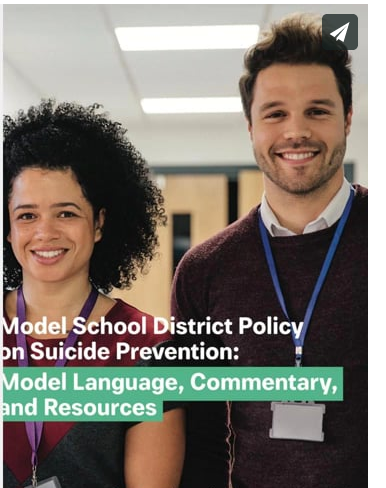 Prevention starts with a plan. No need to be overwhelmed by the prospect of creating a prevention plan for something you have no experience with. You can always ask Google, right? If you do, chances are you’ll come up with information that includes these topics:
Prevention starts with a plan. No need to be overwhelmed by the prospect of creating a prevention plan for something you have no experience with. You can always ask Google, right? If you do, chances are you’ll come up with information that includes these topics:
- Warning signs and risk factors
- The importance of school counselors and other mental health professionals
- Model School District Policy on Suicide Prevention
Topics:
Expert Commentary: Jill Cook, Assistant Director, American School Counselor Association
Evolution of the School Counselors’ Role
Why Every School Needs a Policy on Suicide Prevention
Overview of the Model District Policy on Suicide Prevention
Advocating for a School District Suicide Prevention Policy
Getting Started
Prevention Intervention—Assess and Refer
Postvention—After a Suicide
Let the Students in on the Plan
Intervention

When a student says, “I want to kill myself”, your reaction is important.
Don’t say:
- “You don’t really mean that.”
- “But your family and friends would miss you a lot.”
- “Yeah, right. So do I.”
- Or any other comment that implies you do not take the student seriously.
Do say:
- “What is making you feel that way?”
- “Do you have a plan for how you would do it?”
- “What might stop you from doing it?”
The point is, you need to take a statement like that seriously. Listen without judgement to the student’s concerns. It’s important to have a trained mental health professional do a risk assessment, notify parents, and create a safety plan.
If a mental health professional is not available at your school, ask the student if they would be willing to call the Suicide Prevention Lifeline together. As of July, 2022, it can be reached by dialing 988.
Topics:
How to Help a Suicidal Student
Expert Commentary: Kelly Vaillancourt Strohbach, Director of Policy and Advocacy, National Association of School Psychologists (NASP)
Parents Have the Right to Know
Intervention Plans Based on Risk Assessment Results
Peer-Based Intervention Groups at Higher Risk
Creating a Safety Plan
Resistance
Author’s Note: I Wish I Had Known Then What I Know Now
Postvention
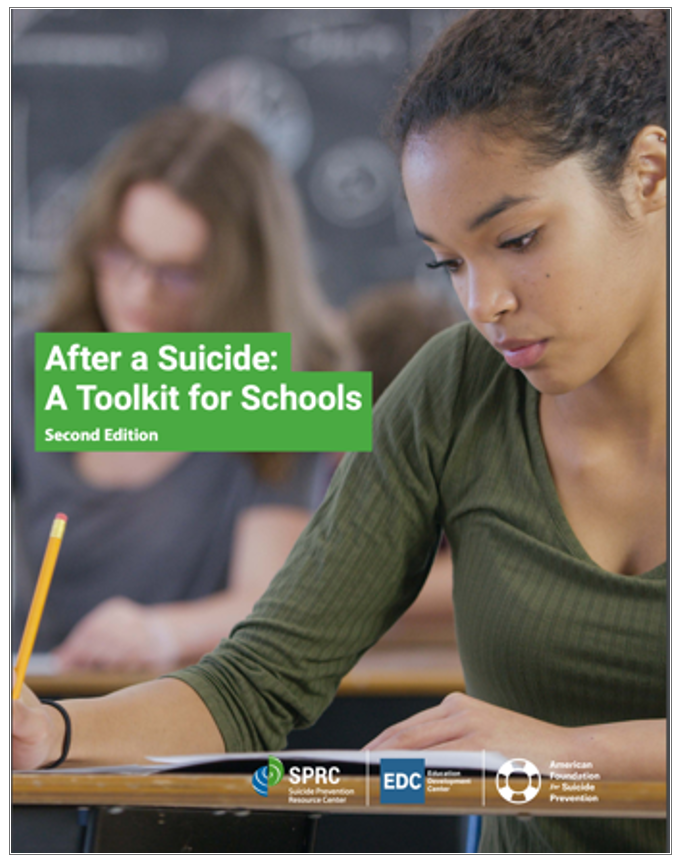
Sometimes the suicide death of a student is the first experience a school community has with suicide. The death is a tragedy, no matter what. But how school leaders react to the crisis will set the tone for the aftermath.
If there is no suicide prevention plan in place in the school district, the first response should be to get help from experts. If none are available in your community, download a free copy of After a Suicide: A Toolkit for Schools, published by the American Foundation for Suicide Prevention (AFSP) and the Suicide Prevention Resource Center (SPRC).
The guide provides valuable guidance on crisis response and communication. Schools must react quickly to get ahead of rumors and negative press. The guide includes handouts and sample statements districts can use immediately.
After a Suicide: A Toolkit for Schools
Topics:
After a Suicide: A Toolkit for Schools
Moving Forward
Engaging the School Community in Suicide Prevention

When a suicide prevention program is first introduced to the school community, the initial response from teachers may be, “Oh no, not one more thing to squeeze into an already packed curriculum!”
Schools that have experienced the suicide of a student will react much differently. They are ready to learn what they can do to prevent another tragedy.
Today, many states have laws requiring teachers and staff to be trained in suicide prevention. It’s likely that most states will adopt those laws as youth suicide rates continue to climb.
The attitude of school leaders who introduce a suicide prevention program is a good indicator of its success. There are plenty of ways to get buy-in from the school community if you plan ahead.
How Freedom High Turned Suicide Prevention into a Success Story
Topics:
Expert Commentary: Sandra McNally, Prevention Manager at Emergency Mobile Pediatric and Adolescent Crisis Team-Suicide Prevention Center (EMPACT-SPC) in Tempe, Arizona
Obstacles Preventing Comprehensive Suicide Prevention Plans
How to Get Buy-In for Suicide Prevention Programs
Copy from Others
Don’t Reinvent the Wheel
Take Pride in Caring
Success Stories

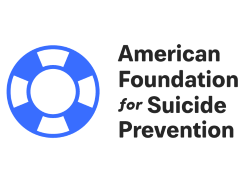
We know suicide is preventable. Even though it seems that the numbers continue to rise, there is hope for the future as we learn more about the causes. We have evidence-based strategies that work.
Educators are far more comfortable talking about prevention, and training is common in schools across the country. Mental health is now on the front burner, and the government is taking action to provide funding to address the crisis.
Advocacy works. We have new laws and even a new three-digit suicide prevention lifeline emergency number – 988. Family doctors commonly screen all patients for depression and anxiety, major contributors to suicidal ideation. Even the language has changed as awareness increases. It has become the norm to say a person died by suicide rather than committed suicide, making it sound more like a cause of death than a crime.
Change takes time and dedication – just look at how breast cancer went from affecting one in eight women to being highly curable today. We can celebrate prevention efforts for every life saved. The more people get involved, the more the suicide prevention movement will grow. So please help spread the word!
Topics:
We Know Suicide Is Preventable
Introduction to AFSP
Expert Commentary: John Madigan, Senior Vice President and Chief Public Policy Officer, American Foundation for Suicide Prevention
Stories of Success
Conclusion
What the Future Will Be

For those whose lives have been touched by suicide, advocacy is a powerful tool for change. Any educator can get involved by choosing an organization that resonates and volunteering for an activity that seems a good fit. Even if the only thing you do is talk about suicide prevention, you are increasing awareness.
As an educator, you have the ability to support suicide prevention by becoming informed and knowing what schools can do. You may even be inspired to initiate a suicide prevention program in your school or district. You are a part of creating hope for the future.
Free Suicide Prevention Resources
Topics:
Expert Commentary: Doreen Marshall, Vice President of Programs at the American Foundation for Suicide Prevention (AFSP)
Hope for the Future
Resources

This book is full of information and ideas. To access sources mentioned, Chapter 10 provides reader with a comprehensive list of websites and articles. Wherever you are in your journey, this resource section includes detailed information mentioned in each chapter and marked by corresponding endnote numbers.
Topics:
Prevention: Guidebooks and Toolkits
School Programs
Crisis Services for Students
Suicide Prevention Organizations and Programs
Relevant Research and Resources
Working with the Media
Intervention: Recommended Resources
Postvention: Recommended Resources
Engaging the School Community: Connectedness
Testimonials
“Spectacular resource for educators working with students who suffer from depression, have suicidal thoughts, and may be in this state of mind, or those who just want to know what signs to look for with students who are dealing with this issue. This is written from the educator’s view and with personal knowledge of the heartache of losing someone they love to suicide. The book provides the tools and resources for educators to give support and assistance to students and their families. If you are an educator, this is a must-read. Teachers often spend more time with students and see them daily; making them “first-responders” for suicidal youth. Please read this book, it WILL change your life and potentially save the life of a student that attends your school.”
Joyce Morgan, MSW, LCSW, LISAC, Social Work Senior Manager, Banner University Medical Center Tucson and South Campus
“This book should be in the hands of every educator and in every school. It is imperative that suicide awareness and prevention be a part of everyday measures to ensure the safety of our children and allow for discussions to happen freely and without judgement. Theodora Schiro has created an "A to Z" resource for this to happen. As a community it is time to make mental health education a part of our everyday lives.”
Melinda Vail, C.Ht., Grief Specialist
“Theodora Schiro’s work on suicide prevention speaks to me on both a personal and professional level. As educators, we can benefit from a better understanding of what causes students’ suicidal thoughts. Schiro’s work provides both a practical approach and a means to help us understand how our feelings can cause inaction and the danger that causes those we care most about.
I also found that Schiro’s work spoke to me in how to manage the relationships with my own children. As a father, I have had to navigate the difficult waters of depression and anxiety in my own child. I’m grateful for the resources others have guided me to, allowing me to focus on the wellbeing of my child.
If you are looking for a way to better understand suicide, how to prevent suicide, or how to respond when a suicide happens in your community, Schiro’s work has something for you. I appreciated the ability to use each section in isolation to meet the needs of my specific community.”
Dr. Timothy Fountain, Director of Curriculum & Instruction, Scottsdale Unified School District.
"Having worked under Theodora as her School Counselor during the tragic time of the loss of her son to suicide, this handbook is an honest and heartfelt collection of thoughts, ideas, and research gathered over time. Through the personal tragic loss, to past and current prevention efforts, research and experts in the field, Theodora provides this practical handbook full of evidence-based practices to serve as a useful tool to guide all educators in developing a successful suicide prevention program.”
Dena Morgan, MAEd., MAFP, School Prevention Coordinator


